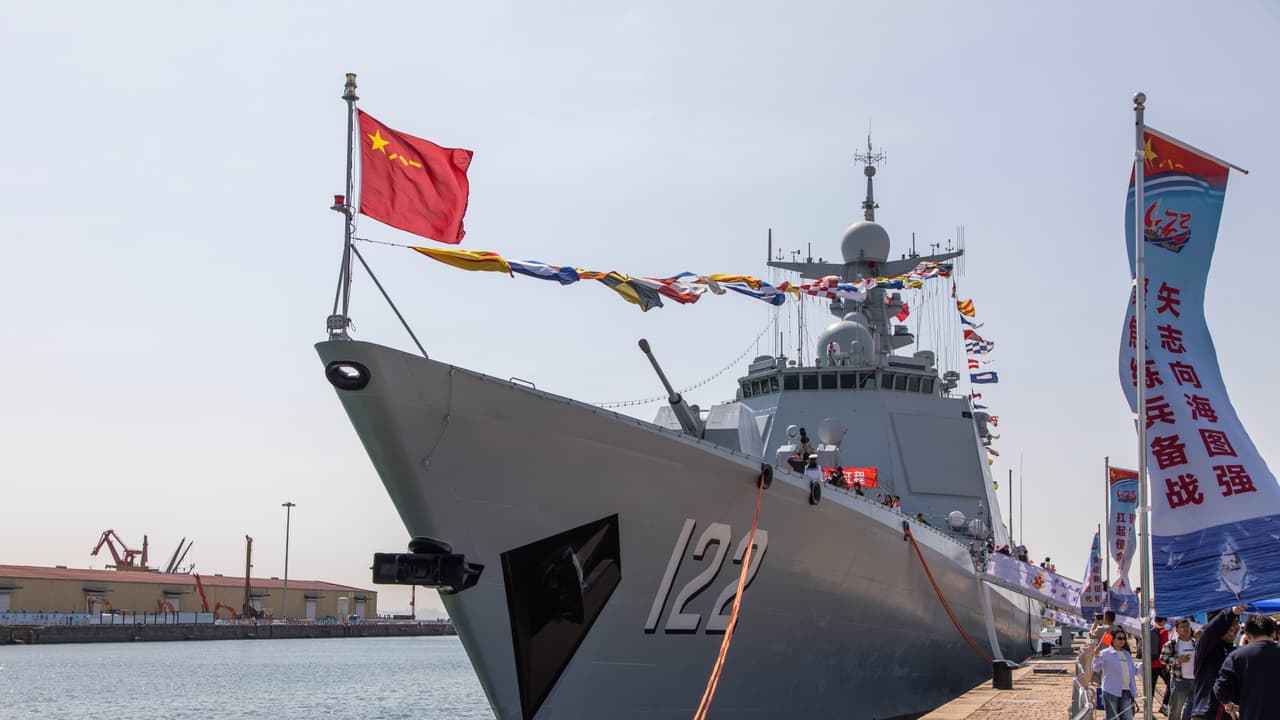China expands its Indian Ocean influence subtly through partner navies like Pakistan’s, using Chinese-built ships, training, and tech. This indirect approach embeds strategic control without a direct military footprint.
New Delhi: There is a familiar pattern in China’s rise along the Indian Ocean. The focus often lands on its own fleet — the destroyers pulling into Djibouti, the survey ships roaming the Bay of Bengal, the submarines that occasionally surface in Colombo.
What receives far less attention is the quieter story: how Beijing now projects power through other countries’ navies, not its own.
Pakistan,: The Proxy Navy
Look at Pakistan, the clearest example. Over the past decade, the Pakistan Navy has steadily become a fleet built, armed, and in part serviced by China. New frigates, coastal patrol vessels, and upcoming submarines — almost all have Chinese origins.
Training and doctrine have shifted to match the hardware. When those ships sail into the Gulf of Aden or throw their weight behind a new “capacity-building” mission in Somalia, they may fly Pakistan’s flag, but the ecosystem behind them points elsewhere.
This is not accidental. China has found an easier way to expand its reach: let a partner country carry the appearance of leadership while Beijing holds the deeper levers — financing, maintenance, spare parts, technicians. It is a clever arrangement. The optics are softer. The politics are gentler. And the influence, once embedded, is extremely hard to dislodge.
Somalia’s Naval Dilemma
Somalia’s recent defence agreement with Pakistan fits neatly into this playbook. On paper, Islamabad is offering training and technical support to help Mogadishu rebuild its long-neglected navy. For Somalia, a country fighting internal instability and piracy, the offer looks practical. But beneath that headline sits a structure far bigger than a five-year MoU.
If Pakistan is delivering the training, Chinese-built ships and Chinese-origin systems will inevitably follow. A force trained by Pakistan will likely inherit the technologies and procedures that Pakistan itself relies on — and those systems do not originate in Karachi. They come from Guangzhou, Wuhan, and Shanghai. In other words, China enters Somalia’s maritime future without ever appearing at the negotiation table.
Avoiding Backlash, Maximizing Reach
This style of influence avoids the backlash that accompanies a direct Chinese military footprint. The Djibouti base drew global scrutiny. A Chinese-operated Sri Lankan port raised alarms across the region. Beijing has learned from those episodes. It now prefers arrangements in which someone else takes the political heat and someone else signs the paperwork.
The advantage of this model is subtlety. By working through Pakistan, China gains a presence in the Horn of Africa that would have been diplomatically costly if pursued openly. The Pakistan Navy’s repeated deployments near Somalia under multinational banners already give Beijing an indirect operational view of the region. A formal training partnership pushes this a step further. It creates long-term habits, dependencies, and expectations inside Somalia’s maritime institutions.
For African governments, the dilemma is not whether to accept outside help — most need it. The dilemma is recognising the chain of influence that support brings with it. Technology dependence becomes strategic dependence. Training becomes alignment. A navy rebuilt by foreign partners tends to mirror the worldview of those partners.
Implications for India and the Region
India and other maritime players should see this shift for what it is: the next stage of China’s seaward strategy. Not louder, but deeper. Not visible, but embedded. China doesn’t need more bases if friendly navies can deliver its interests under their own flag.
Somalia’s leaders face a choice that is larger than the MoU. They are deciding not just who trains their sailors today, but whose strategic orbit their navy may fall into tomorrow. In the Indian Ocean, influence doesn’t always arrive with a carrier group. Sometimes it arrives quietly — aboard a borrowed fleet.
